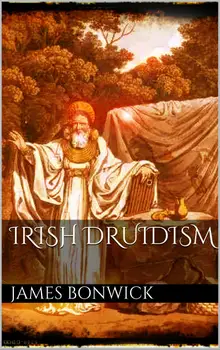Who were the Druids?
This question has agitated the minds of the learned for a long period; and various, as well as contradictory, have been the replies. Tradition preserves their memory as of a pious and superior race, prominently associated with the British Isles and France, and, in a lesser degree, with Belgium, Holland, Germany, and the lands of Scandinavia.
Much romance has been long attached to them. We hear their chants in the Stone Circles. We listen to the heaven-inspired utterances of the Archdruid, as be stands on the capstone of a cromlech, in the eye of the sun, surrounded by the white-robed throng, with the bowed worshippers afar. We see the golden sickle reverently cutting off the sacred mistletoe. We follow, in imagination, the solemn procession, headed by the cross-bearer. We look under the old oak at the aged Druid, instructing disciples in mystic lore, in verses never to be committed to writing. We gaze upon the assembly of kings and chieftains, before whom the wise men debate upon some points of legislation.
Then, again, we recognize the priests as patriots, resisting the invaders of their homes, and loudly chanting the Battle Hymn. We are at the convocation of Brehons, in their deliberations on law, and, awestruck, wait upon the observers of sun and stars, or of the signs of the times in the investigation of terrestrial phenomena. We go with them to the judgment upon offenders of an unwritten code, and witness the dread ordeal, or the fiery human sacrifice.
But our inquiry is, What has Irish tradition or literature to say to these interesting details concerning Druids?









